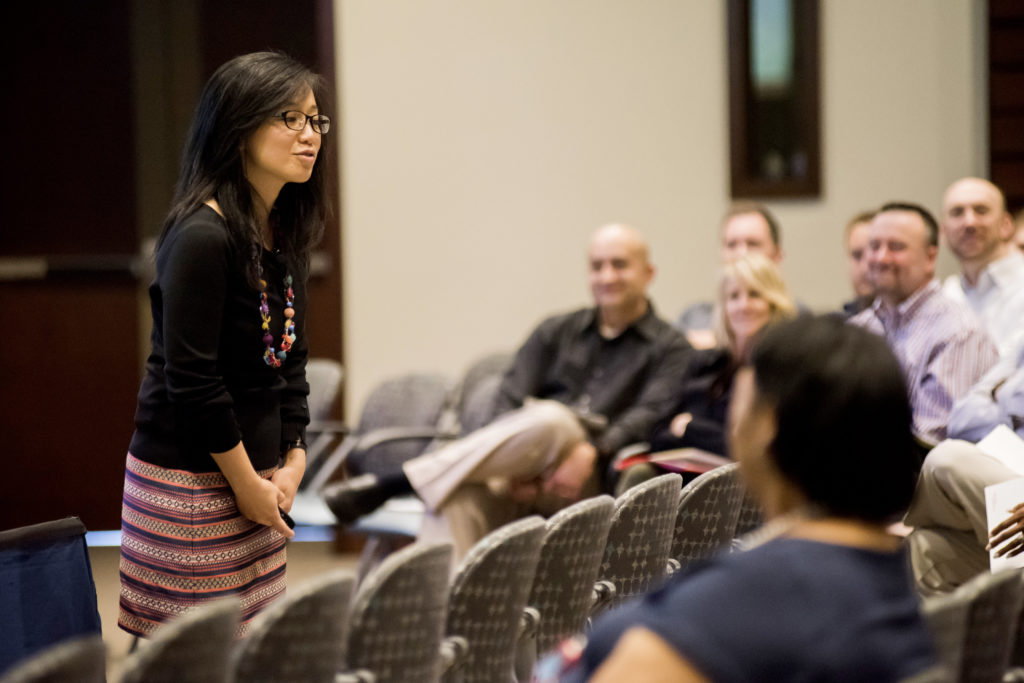April 3, 2014 / Esther Choy

Last week, I solved the mystery, ended the suspense, and answered the question… The ideal story length is 5-7 minutes.
Say, just exactly how did Esther come up with 5-7 minutes?
You may wonder. Here’s how.
A bit of on context: The stories I teach and facilitate are intended for business audiences and professional settings. Often these stories are delivered verbally. My clients have a ton of data to share and offer services steeped in complexity. Their marketplace is ultra dynamic and competitive. The minute they slow down and blink, someone else will steal their lunch. From my experience teaching and facilitating workshops since 1995, a group of audience will begin to loose its undivided attention after 10-15 minutes no matter how interesting the talks are. (TED actually errs on the generous side: it allows speakers up to 18 minutes.)
After 10-15 minutes, audiences need to get involved in something interactive such as Q&A, or small group exercises. So when I plan my training, I allow myself no more than this 10-15 minute block to speak. But this 10-15 minute allowance has a mix of theories, data, and examples (or stories). In my world, theories set the framework, data proves the theories, and examples cement the learning.
That’s how I come up with 5-7 minutes as the ideal story length.
To compare my rule of thumb with written stories, I’d like to contrast my 5-7 minute rule with Allison Betancourt’s blog on “How long should story be? A short guide to story length.”
The type of story Betancourt refers to is written and creative story intended for publishing. She divided the whole universe of written story in 7 categories, from micro-fiction (0-100 words) to epic sequels (+110,000 words). The category most resembles business stories is one called Flash Fiction with 100 – 1000 words.
For most people, it takes 5 – 7 minutes to deliver a story of 1000 words or less verbally. One important aspect of business storytelling is that we have a distinct advantage: Our non-verbals. Our eye contact, facial expressions, posture, tonal variations, hand gestures, etc. can all work in concert with our stories.
Of course, these non-verbals can — and often — work against our stories. But the good news is when you have a well crafted story with complimentary non-verbal, you don’t have to be a superhero to tell great stories!
Related Articles
3 Basic Storylines You Should Be Using in Business Contexts
What Your Audience Wants Most From Presentations
Better Every Story
Leadership Transformation through Storytelling
"This is an amazing and insightful post! I hadn’t thought of that so you broadened my perspective. I always appreciate your insight!" - Dan B.
Get Esther Choy’s insights, best practices and examples of great storytelling to your inbox each month.



